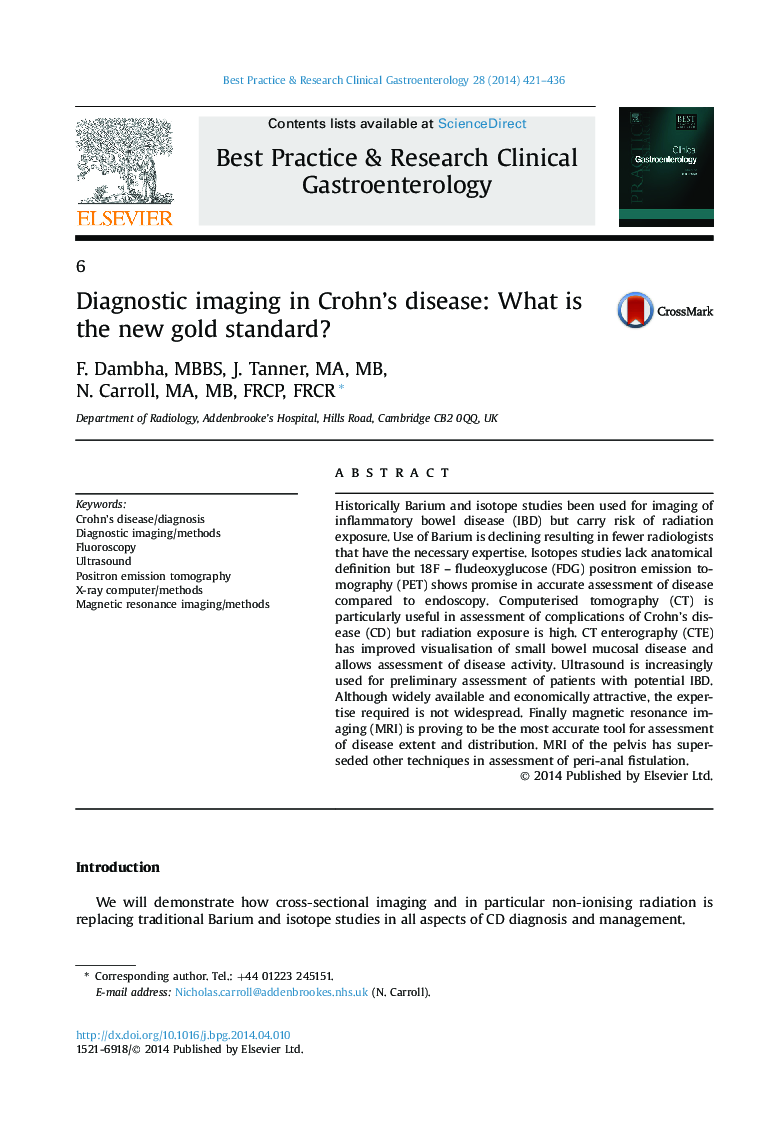| Article ID | Journal | Published Year | Pages | File Type |
|---|---|---|---|---|
| 6086352 | Best Practice & Research Clinical Gastroenterology | 2014 | 16 Pages |
Historically Barium and isotope studies been used for imaging of inflammatory bowel disease (IBD) but carry risk of radiation exposure. Use of Barium is declining resulting in fewer radiologists that have the necessary expertise. Isotopes studies lack anatomical definition but 18F - fludeoxyglucose (FDG) positron emission tomography (PET) shows promise in accurate assessment of disease compared to endoscopy. Computerised tomography (CT) is particularly useful in assessment of complications of Crohn's disease (CD) but radiation exposure is high. CT enterography (CTE) has improved visualisation of small bowel mucosal disease and allows assessment of disease activity. Ultrasound is increasingly used for preliminary assessment of patients with potential IBD. Although widely available and economically attractive, the expertise required is not widespread. Finally magnetic resonance imaging (MRI) is proving to be the most accurate tool for assessment of disease extent and distribution. MRI of the pelvis has superseded other techniques in assessment of peri-anal fistulation.
